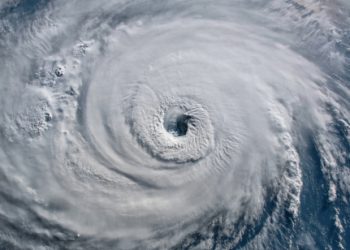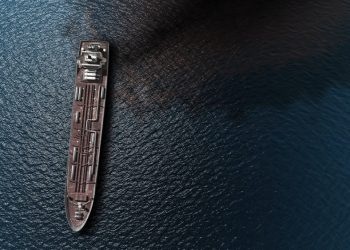New commentary in Nature Reviews Microbiology by Samantha Joye of the University of Georgia and her colleagues argues for further in-depth assessments of the impacts of dispersants on microorganisms to guide their use in response to future oil spills.
Chemical dispersants are widely used in emergency responses to oil spills in marine environments as a means of stimulating microbial degradation of oil. After the Deepwater Horizon spill in 2010, dispersants were applied to the sea surface and deep waters of the Gulf of Mexico, the latter of which was unprecedented. Dispersants were used as a first line of defense even though little is known about how they affect microbial communities or the biodegradation activities they are intended to spur.
The article, published May 6, summarizes previous research from laboratory and field studies assessing the impacts of dispersants, which have generated inconsistent results.
“This comprehensive review illustrates a compelling need not only for more studies aimed at assessing the impacts of dispersants on microbial communities and microbial processes in marine ecosystems, but also underscores the necessity for using standardized methods and consistent metrics to document dispersant effects on microbial populations,” said Joye, the UGA Athletic Association Professor of Arts and Sciences and a professor of marine sciences in the Franklin College of Arts and Sciences.
The researchers document historical context for the use of dispersants, their approval by the Environmental Protection Agency and the uncertainty about whether they stimulate or in fact inhibit the microbial degradation of oil in marine ecosystems.
“Existing research demonstrates that there is too little known about the dispersant impacts on microorganisms, resulting in a controversy regarding published findings,” said article co-author Sara Kleindienst, a junior professor at the University of Tübingen, Germany.
“This review provides some explanations about potential mechanisms behind our own observation and the discrepancies observed in the literature.”
One challenge of testing the toxicity from the use of dispersants on the broader ecosystem is the complex microbial communities of the different habitats represented in a large marine environment, such as the Gulf of Mexico. Development of model microbial communities and type species that reflect the composition of surface water, deep water, deep-sea sediments, beach sediments and marsh sediments is needed to evaluate the toxicity effects of dispersants.
“The bottom line is that we do not truly understand the full range of impacts that dispersants have on microbial communities, and we must have this knowledge in hand before the next marine oil spill occurs to support the decision-making process by the response community,” Joye said.
Source: Nature Reviews Microbiology
In the start, I was explicit with you propecia before and after has changed my life. It has become much more fun, and now I have to run. Just as it is fabulous to sit.





























































